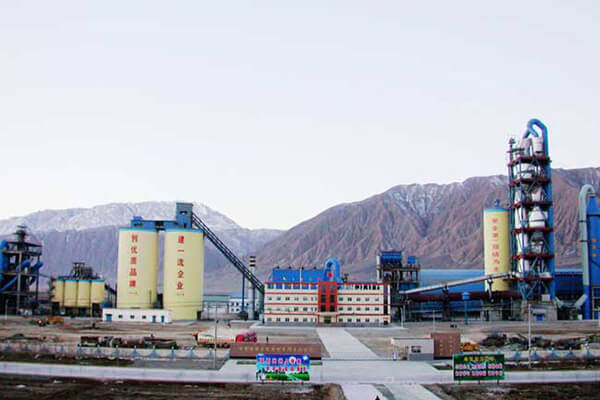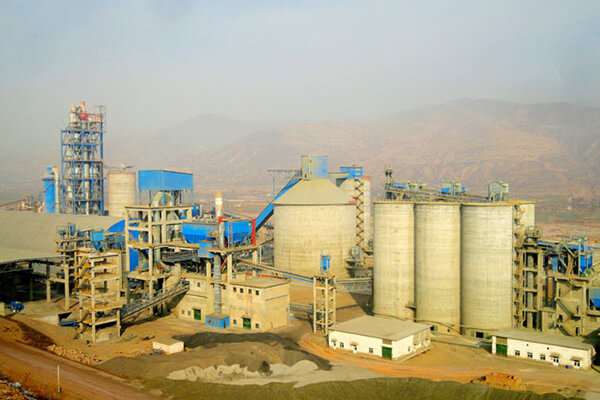With the rapid development of electric vehicles and renewable energy, battery technology has become increasingly important as a key way to store and release energy. In battery manufacturing, battery-grade lithium carbonate as a crucial material for lithium-ion battery cathode material, its preparation process and production process have a direct impact on battery performance. Therefore, in this blog, we will introduce the battery-grade lithium carbonate preparation process in detail.


The process of obtaining lithium involves several steps. First, natural lithium concentrate is roasted to make it usable. Then, sulfuric acid extraction is used to turn the lithium ore into a liquid lithium sulfate state. Next, to create lithium carbonate, calcium carbonate and caustic soda solutions are added to elemental lithium. Impurities are then filtered out to get crude lithium carbonate. The crude carbonate then reacts with water and carbon dioxide to form a lithium bicarbonate solution. Finally, thermal decomposition is used to extract lithium carbonate from the lithium hydrogen carbonate solution.
The production system of this project consists of three primary subsystems. The first subsystem is responsible for pre-processing the raw materials and includes processes such as crystalline conversion and acid roasting. The second subsystem is dedicated to preparing lithium carbonate, which involves various processes such as leaching, purification, lithium precipitation, carbonation, thermal decomposition, refining, and fine grinding. The last subsystem is responsible for preparing the by-product sodium sulfate, including neutralization, evaporation crystallization, centrifugation, and drying.
To begin the transformation process of lithium, the first step is to transport the lithium ores to the raw material warehouse. These ores need to meet the process requirements, so they are crushed and screened to achieve the desired particle size. The next step is to transport the lithium ores to the raw materials silo via a reclaimer and belt conveyor. Once they are in the silo, they are weighed using a quantitative feeder and then conveyed to the kiln tail feed chute by a conveyor belt and bucket elevator. Finally, the raw materials are dropped through a pipe to the end of the rotary kiln where the transformation process begins.
In this process, the raw material is calcined at high temperature to convert a-lithium pyroxene to β-lithium pyroxene. The entire crystal conversion roasting is a continuous production process using natural gas as the main fuel. The following are the detailed steps:
Raw materials: Lithium pyroxene is fed into the process.
Fuel Supply: The natural gas is depressurized and metered at the on-site gas station before entering the kiln head of the rotary kiln.
Kiln Reaction: a-lithium pyroxene is transformed into β-lithium pyroxene by high-temperature calcination in a rotary kiln. It is ignited and combusted by a low nitrogen burner to ensure that material temperature in the high-temperature section is controlled at 1050~1150℃.
Continuous Production: After the material reaction is finished, the product is continuously discharged from the kiln head to maintain the continuity of production.
Industrial Waste Gas Treatment: While the product is discharged, the dust is led out from the kiln tail and collected by a bag collector. Then followed by wet desulfurization and SCR denitrification to ensure that the exhaust gas meets the environmental standards, and is finally discharged high in the air.
Heat exchange and cooling: The clinker material from the kiln head ( about 1,000°C) is directly exchanged with the cold air in the grate cooler. The hot material is discharged from the rotary kiln to the grate bed of the grate cooler. A certain bed thickness is formed under the reciprocating motion of the cross-pushing rod. The cooling fan provides cooling air to cool the hot roasted material.
Heat recovery: The cooled cooling air becomes high-temperature hot air (about 800°C), which re-enters the kiln system as combustion air, realizing heat recovery and reducing the energy consumption of the system.
Product transportation: After the roasted material is cooled to <100°C through the screening and cooling machine, it is conveyed through a sealed conveyor belt to enter the next process step.
The entire process achieves continuous transformation from α-spodumene to β-spodumene by controlling temperature, time, and smoke treatment. Additionally, thermal recovery is conducted throughout the process to enhance energy utilization efficiency.
The roasted materials are transported to the vertical mill for grinding using conveyor belts and elevators. After the fine grinding process, at least 85% of the material should pass through a 200-mesh sieve. The finely ground roasted material is then screened by the powder selector, and the dust is collected by the dust collector. Finally, the fine-roasted material that meets the requirements is transported to the fine-roasted material silo for storage using an elevator or silo pump.
It is added to the acid mixer after finely grinding the raw material through the impeller feeder and electronic belt weigher. Add sulfuric acid from the sulfuric acid tank according to the proportion, then mix and introduce the mixture into the acidification kiln. The process involves acid roasting at 250-280°C for 30-60 minutes. During the roasting process, the β-spodumene in the calcined product reacts with sulfuric acid. Hydrogen ions from sulfuric acid replace lithium ions in β-spodumene, forming water-soluble Li2SO4 and producing acidulated clinker. After cooling to below 50°C, the acidulated clinker is conveyed to the clinker storage bin for storage.
The plate feeder is a type of feeding equipment that is categorized into three types: light, medium, and heavy. It is typically used at the end of a conveyor or elevator that feeds a plant, but it can also be used to feed any other single unit. This feeding equipment is widely used in mining, metallurgy, building materials, and coal industries.
Extraction Liquid Separation: Utilizing a membrane pressure filter, the slurry obtained from leaching is subjected to solid-liquid separation.
Treatment of Extraction Liquid: The extracted liquid is transferred to a storage tank for purification, with a lithium sulfate concentration of around 140g/L.
Leaching Residue Treatment: After washing and air blowing, measures are taken to ensure that the lithium oxide content in the residue complies with the standard of 0.3~0.35%.
Conveyance to Purification Vessel: The lithium sulfate solution from the leaching liquid is transported to the purification vessel.
Adjustment of Reaction Conditions: Within the purification vessel, PH is regulated to 10~12 by introducing caustic soda and soda ash solutions. Stirring reactions are conducted at a controlled temperature of around 80°C.
Precipitation Formation: Precipitation occurs, immobilizing impurities such as iron, magnesium, aluminum, and calcium within the precipitate.
Solid-Liquid Separation: Filtration using a plate and frame press separates the purified liquid phase from the solid components.
Purification Residue Treatment: Processing the purification residue involves a pre-treatment before returning it to the leaching phase, enhancing reusability.
The lithium precipitation process aims to efficiently and with high purity extract lithium carbonate from the solution. It involves the following key steps:
The purified liquid is mixed with a sodium carbonate solution and heated to boiling to generate lithium carbonate precipitation.
The resulting slurry containing lithium carbonate is separated using a centrifuge, yielding solid lithium carbonate and a lithium precipitation liquor.
The lithium precipitation liquor is directed to the powder system for further processing.
The separated lithium carbonate solid undergoes stirred washing to eliminate attached impurities.
The crude lithium carbonate product, which has been separated, is mixed with water to form a slurry. The water used is mainly sourced from the caustic soda mother liquor, recycled water systems, and sewage treatment stations. This slurry is then fed continuously into a carbonation reaction tower for ongoing carbonation. The resulting solution of lithium hydrogen carbonate is filtered and the clear liquid is stored in a buffer tank.
Lithium bicarbonate solution is heated to over 90°C, decomposing into lithium carbonate precipitate, carbon dioxide, and water. After separation, part of the solution is cooled for impurity removal, while another part undergoes neutralization and proceeds to the refined lithium carbonate process.
Mix lithium carbonate crude with water (3:1 ratio), stir at 90°C for 15-20 mins. Centrifuge to get wet lithium carbonate for carbonization. Send the separated washing water to acidifying material pulping leaching.
The lithium carbonate slurry is separated using a centrifuge, dried in a drying machine, finely ground to 3μm≤d50≤8μm with an airflow ultrafine crusher, and then automatically packaged before being sent to the finished goods warehouse.
The process of producing sodium sulfate involves neutralization, which occurs when lithium and leaching solutions react with concentrated sulfuric acid. This reaction produces a solution with PH adjusted to a desired level. The neutralized liquid is then concentrated through evaporation, leading to the crystallization of sodium sulfate and the recovery of the mother liquor, which contains precipitated sodium. Wet sodium sulfate is then dried to obtain anhydrous sodium sulfate, which is the final product.
Submit Request